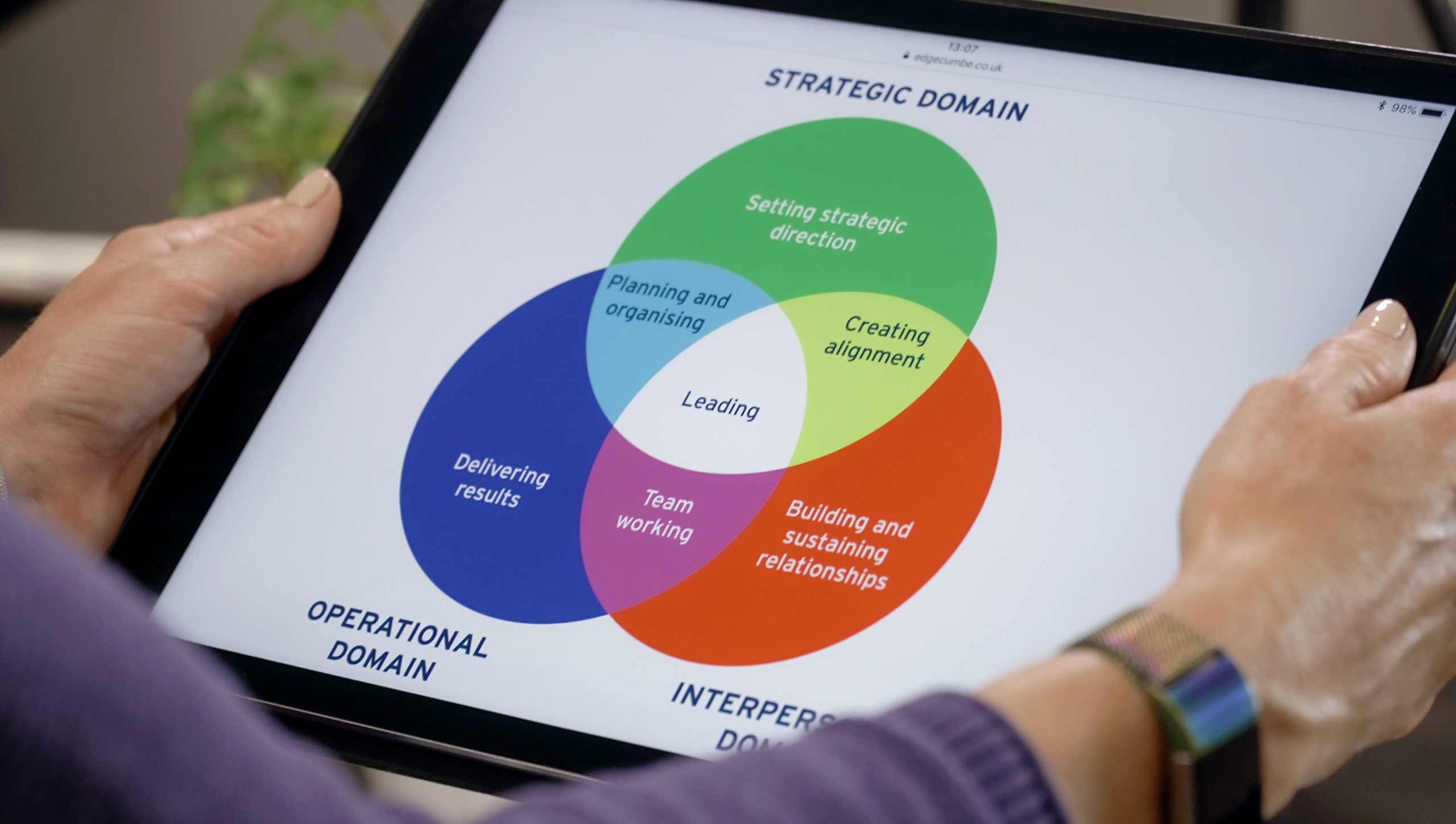We ran a successful online event on 13 July 2022 introducing our partnership with HUCAMA and HUCAMA Factors – the next generation of people assessments and a comprehensive assessment solution for the prediction and development of performance in the workplace. HUCAMA Factors is scalable suite of tools that is perfect for any organisation that wants to assess personality, ability and competence.
We ran this online event in conjunction with Rainer Kurz (the developer of HUCAMA Factors) and Michele Guarini (HUCAMA CEO). The Q&A session as part of this webinar generated some interesting questions, which we have sought to answer below. We would be glad to receive any further questions. Simply email them to enquiries@edgecumbe.co.uk and we will endeavour to provide you with a quick response.
Key questions around HUCAMA Factors
What research have you done to establish criterion validity?
In a validation-centric development study, items representing three different competency models were incorporated into the research design. This facilitated item selection and creation of scale facets. In a criterion-related validation study the first reviewer ratings received for N=113 participants were used to calculate observed validities, which culminate in a .50 correlation of Personality Factors (PF48) total with Competency Factors (CF48) reviewer total – a very strong level of validity.
There seems to be a considerable amount of information generated. How easy is it for participants to retain this?
We always recommend that it is important when giving feedback to understand participants’ context and what they want to get out of the session so that feedback can be made more relevant for them. As it is possible to view the profile with all the factors/facets showing on one page, it is easy to hone in on the most relevant aspects, rather than always having to provide feedback on each facet. Wherever possible, we recommend that participants should consider their key takeaways at the end of the session and seek to incorporate these into any personal development plans. By doing this, it is much more likely that any insights will stick.
There are a range of reports provided, which can be shared directly with participants, so they have something to refer back to. The ‘Personal Report’ provides a comprehensive report featuring STEN scores at factor and facet level with an implications page at the end that highlights extreme tendencies. This can be shared in advance of your meeting for orientation. It is also possible to further extend the insights by sharing other useful reports. The ‘Competency Prediction Report’ could be shared in the context of coaching or other developmental interventions. The ‘Team Role Report’ has been developed with a view to sharing results across groups and, for that reason, uses intrapersonal scores. This can be used to highlight the participant’s likely contribution to teams.
Some of the features seem quite similar to Wave. How does this differ?
The HUCAMA Factors suite builds on leading assessment tools including NEO, OPQ and Wave. The HUCAMA Factors range feature builds on the Wave concept but applies it for the first time at item (rather than facet) level. A narrow range indicates accurate measurement, whereas a wide range suggests interpretation and probing of results.
The Wave ‘Professional Styles’ scores combine results of motive and talent items. Where results differ at the 36-dimension level by three or more, STEN markers are displayed. The HUCAMA Factors Talent Gap indicator is triggered when the talent item (which is always the last item for the facet) generates a STEN that is two or more STEN different from the facet STEN. Item level information should be explored to understand the discrepancy. Wave profile use normative and ipsative responses which are normed, and in the ‘Expert Report’ highlight normative-ipsative splits of three or more STEN. HUCAMA Factors profiles are based on normative scores to avoid the statistical disadvantages of ipsative data. The Personality Factors Expert Report uses intrapersonal scores that build on the ‘ipsatisation’ method outlined by Bartram (1996) to remove the effect of acquiescence. When the ‘under pressure’ indicator is switched on, differences of two or more STEN from the facet STEN are highlighted. One difference from Wave is that the Personality Factors Expert Report gives the practitioner choice over when to reveal interpretation features and the option to explore these one by one rather than sharing all this information automatically.
Key questions around the Primary Colours Leadership Report (PF48)
What feedback have you gained already on the leadership report? How has this been received?
From the outset, we wanted to create a new report that was informed by our clients’ and practitioners’ needs. To this end, we held initial discussions with our affiliates (the practitioners we train to use our tools) and associates (whom we engage to work on our client delivery projects) to understand, from their experience, what they need from a personality questionnaire and its outputs. What emerged from this was that they preferred more visual and less text-heavy reports whilst having the ability to gather deep insights. This provided us with a useful steer when designing our new leadership report.
After we developed some initial mock-ups of the report design, we ran some focus groups with a few of our affiliates and associates to get their reactions. We made changes based on their inputs, for example also highlighting areas of limited impact.
We then road-tested the prototype of the report with willing volunteers and gathered feedback from both the practitioners and participants. The feedback from the practitioners was that the report is user friendly and versatile to use; they liked the fact it starts with the big picture and drills down, and felt that the format was very visual and clear. The feedback from the participants was that the report was easy to digest, and offered useful insights into their style and impact. We would also be keen to gather any further feedback after you receive your own report.
When you discuss the leadership model, is it only suitable for a certain seniority or are all levels of management and leadership covered?
This report can be used on anyone who is managing and leading people, or about to take on this responsibility. The report will help them to understand their leadership style and impact, and how they may be able to elevate this further. The model is comprehensive and covers the functions leaders must perform. The relative importance of the eight functions, as well as the 24 sub-functions, could vary considerably by job role – an aspect that should be explored carefully.
What happens if you use the PF16 version of HUCAMA Personality Factors but want to then access the Primary Colours Leadership Report afterwards?
It is possible to ‘upgrade’ from PF16 to PF48 by sending a corresponding invitation from the system. Standard (personal, expert, competency prediction and team role reports) as well as add-on reports (e.g. the Leadership Report) can be generated from PF48.
If you have been trained in the original Primary Colours toolkit, do you need a refresher in order to use the PF48 version of the Primary Colours Leadership Report?
We will be offering a complimentary familiarisation session conducted virtually to existing trained PCiP practitioners, which will introduce the Primary Colours Leadership Report (PF48) and how to use this. After the session, we will also provide the opportunity to practise using the report on a willing volunteer.
We are delighted to be partnered with HUCAMA to provide this ground-breaking tool to our clients, and are looking forward to introducing this suite of tools to you in more detail. To find out more about HUCAMA training or pricing, request a sample report, or arrange a demo, please contact us on 0117 332 8255 or email us at enquiries@edgecumbe.co.uk.





















